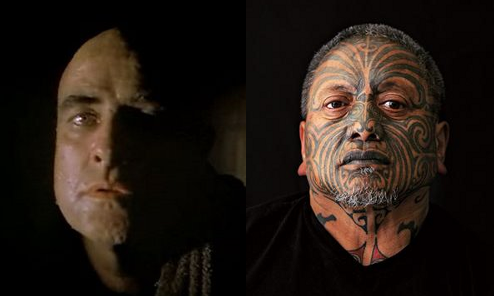Whatever your opinion regarding the Urewera Terror raids, you have to admit that the Police and Crown Law have failed.
The so-called “Urewera 4” were convicted on about half of the least-serious charges brought, and the jury was hung on the more serious charges of participation in an organised criminal group. The defendants may be retried on these latter charges, and they may yet be found guilty. But the paucity of the Police and Crown Law operation is pretty clear regardless.
Let’s put this in context. The Crown sought initially to lay dozens more charges against many more people than the four who eventually stood trial; leave to bring charges under the Terrorism Suppression Act was not granted, and most of the other charges were dropped after the Supreme Court ruled that the evidence upon which they were founded had been illegally obtained. A year of fancy intensive surveillance; an extreme and unprecedented police assault on an unsuspecting community, including violent treatment of old people and children; four and a half years of lawyering comprising the most expensive trial in New Zealand history, held almost as far from the homes of the defendants as is possible; leaks and publicity tactics designed to bring about a de-facto trial-by-media — and the best they convict on is Arms Act offences such as about half the adult male population of rural New Zealand would be guilty of at some time or other? This, we are supposed to believe, is Aotearoa’s finest at work.
Not only did they fail at the nominal objective of securing convictions, they totally failed at the personal, punitive motive of punishing TÄme Iti and shaming him before his people. Iti has been literally the face of MÄori activism, at least since Hone Harawira took the institutional path, and it is impossible to see this trial as anything other than utu for his temerity in escaping conviction for previous acts of defiant political theatre, most notably shooting a flag at a Waitangi Tribunal hearing in 2005. By going in loud and heavy, attempting to show them uppity MÄoris who was boss, the Crown set themselves an ambitious target: they had to actually show who was boss. By failing to convict him on the serious charges at a canter, they failed. TÄme Iti is now a celebrity. His mythology is greater than his deeds, except inasmuch as resisting such a legal and ideological onslaught with dignity is a significant deed in itself. He has, in the view of a significant minority of the population, been victimised by the system, and that victimisation provides proof of Crown oppression he had previously struggled to demonstrate. For the rest of the population, Iti represents a brown, tattooed bogeyman, an object of fear, and of loathing that ranges from mild to virulent depending on who you talk to. Iti isn’t standing for office, he doesn’t need to be loved by 50%+1; he just needs to engender fervent support among an active minority, and vague feelings of unease in the rest. Notoriety differs from fame only in its polarity. The Police and the Crown have granted TÄme Iti this sort of fame. He should probably thank them for it.
As if the particular and the personal weren’t failures enough, the Crown also failed at the strategic project of redefining “activism” as “extremism”. Despite all the preceding factors weighing in the Crown’s favour, that a heavily-vetted jury was split indicates that they have failed to blur this crucial distinction, and failed to reframe left-wing and MÄori activism* as a threat to civilisation, rather than a legitimate expression of dissent in an open society. This suggests that, in spite of years of Police infiltration and surveillance, of decades of stigmatisation and propagandisation of groups from NgÄ Tamatoa to Ploughshares to SAFE, in spite of the better part of two centuries of official attempts to elide the gulf between dissent and insurrection, the public doesn’t really buy it. The jury — and, I would suggest, the people of Aotearoa — quite like and value that distinction and although it is been somewhat eroded, there it remains.
For that finding alone, and regardless of the result of any retrial, yesterday was a good day.
L
* MÄori and leftist because, let us not forget, the Right Wing Resistance are free to continue with their training camps and their pseudo-secessionist projects, unmolested.

